Transportation in India: What the Tuk-tuk?!
This post was originally published in 2010, after our first trip to India.
I wrote most of this India tuk tuk experience on an old notepad while on the overnight train from Udaipur to Mumbai. Yes, an actual pen and paper!
I was cleaning up some old posts and I stumbled on this one. I thought it would be fun to re-publish, as most of you likely have not read this one.
If you’ve visited India, this one should bring back memories.
Transportation in India – What the Tuk Tuk?!
Travel and transportation through India can be challenging. At times, it can be a frightening ordeal that leaves you speechless, questioning why you would subject yourself to such unnecessary distress.
Let me walk you through a typical tuk-tuk experience.
First, the majority of tuk tuks (also known as auto-rickshaws) are falling apart and should not be allowed on the road. They’re basically a lawn mower with a rusty metal bubble on top.
Second, we’re not convinced that the majority of drivers even have driver’s licenses. And, if they do, the government should seriously consider improving the qualification process.
Finally, drivers must learn to decipher which way the flow of traffic is going. And, stick to that direction. That means – do not cross into oncoming traffic!
The Tuk Tuk experience in India
After firmly negotiating the fare you climb into the dirty, rusty auto-rickshaw careful not to cut yourself on loose metal. You then reach into your pocket, take out your hand towel and cover your mouth to protect yourself from the never ending clouds of foul black emissions.
The tuk-tuk rolls forward, you hold on tight and keep your eyes focused straight ahead.
The tuk-tuk forces its way down a narrow beat-up street, cautious of the large potholes and never ending stream of pedestrians. It randomly bounces from one lane to another with no regard for what’s going on behind.
A car in front of the tuk tuk is driving in the center lane towards you. Oncoming motorcycles are forced to use the dusty shoulder instead.
There is no need for road lines, nobody uses them anyways.
The tuk tuk speeds as it approaches the intersection.
You hang on tighter, knowing there is nothing you can do at this point. You’re committed to the outcome of this journey.
At the last minute, the calm driver slams on the brakes and makes a jerky right turn, squeezing between a bus and a pack of masked motorcyclists.
The decrepit bus spits up a cloud of black smoke that fills the cab of the auto-rickshaw.
You cough and sweep the cloud away with your hand but it’s no use; you’ve already swallowed the burning diesel fumes.
Most intersections do not have traffic lights.
The flow of traffic rarely stops. Some are roundabouts, but mostly it’s the standard crossroads. Street signs are mostly a guideline.
The driver inches his way into the chaotic intersection, continually beeping his horn and cutting off motorcyclists and overstuffed jeeps with passengers hanging out the rear window.
There is no protocol.
It’s first come first serve and the bigger vehicles win. Every time.
Glancing over your shoulder, you see another tuk-tuk rapidly approaching at full speed.
You close your eyes and brace for impact.
He hits the brakes and comes to within an inch of your vehicle; the oncoming driver gives you a big smile, thinking “you must not be from around here”.
He chuckles and moves on. His passengers stare at you with strange curiousity.
The driver honks at a dilapidated truck three times.
Why three times, you ask? It doesn’t matter. It’s like the Wild West and drivers have itchy trigger fingers.
There is a commotion twenty meters ahead. Vehicles are swerving to avoid something.
You stretch your neck up to see what’s going on. What’s blocking the road?
Of course, it’s a pair of brown cows sitting in the middle of the busy intersection!
They gaze at the tuk-tuk as it passes by, oblivious to their dangerous choice of resting place. You do double take… are they really chewing on a dirty plastic bag?
Oops… the tuk-tuk just ran over a cow patty.
The driver smiles, then spits red slime out of his mouth. You watch it blow in the wind until it splats on the road. Gross.
Traffic picks up again.
So does the speedometer.
Just kidding, there are no speedometers!
You see a bus picking up passengers ahead.
The tuk-tuk’s speed increases, recklessly.
Without any warning, the bus makes a sharp turn into traffic with very little speed.
The bus driver doesn’t care; he assumes every one behind him will figure it out.
The tuk-tuk slams on the horn (before the brakes) and swings to the right, it feels like the tuk-tuk is going to flip. It doesn’t. In fact, you’re almost impressed by how well it handles jerk reactions.
A motorcyclist is coming at you head on… what is he doing?
He gives a long, loud beep, signaling that he is not moving out of the way.
Your head starts to hurt. You smacked it on the metal roof earlier when the tuk tuk violently hit a string of deep potholes.
Are we there yet?
You turn the corner and are instantly stuck in a traffic jam.
You’re trapped and not moving. Vehicles are jammed into seven lanes, however, the road only has three lanes. It’s a tight squeeze.
The air smells like something is burning. Could there be a fire nearby?
Nope, it’s only a pile of garbage burning on the side of the road.
There’s a uniformed traffic officer blowing a whistle and waving a bamboo stick. He smacks a cyclist on the hand; the cyclist was trying to jump the queue. Not on his watch.
You look to your left. A big brown cow is staring at you.
Out of nowhere, a young homeless child reaches into the tuk tuk and grabs your arm.
She points to her mouth and says “One rupee”.
The tuk tuk driver swats at her and curses something foul.
You can’t breathe.
The air is hot, it stinks.
The horns don’t stop beeping.
Traffic isn’t moving.
Then, it opens up.
Stop. Start. Stop. Start.
The tuk tuk inches forward.
You finally arrive at your destination.
The driver asks for 80 rupees… you agreed on 50 rupees.
Again? Seriously!
The rules change when driving in the countryside.
The bigger the vehicle, the more damage it can cause, thus giving it right of way status. We typically traveled by bus on highways but were strongly encouraged by several locals to take the train instead, for safety reasons.
Like a vehicle graveyard, many abandoned trucks and buses are scattered along the road.
Trucks and buses travel in the middle of the two-lane highways at top speeds. As they approach slower vehicles, drivers wail on the horn and pass them, regardless of the oncoming traffic.
Approaching vehicles glide towards the shoulder for fear of death. Bicyclists and pedestrians are within inches of being clipped, seemingly oblivious to the danger.
They don’t flinch… it’s just business as usual.
 Do you have an interesting India tuk tuk experience?
Do you have an interesting India tuk tuk experience?
Share your story in the comments section below!
Read next – You must see these top Ireland attractions
Transportation in India: What the Tuk-tuk?! is a post from: Traveling Canucks
* This article was originally published here
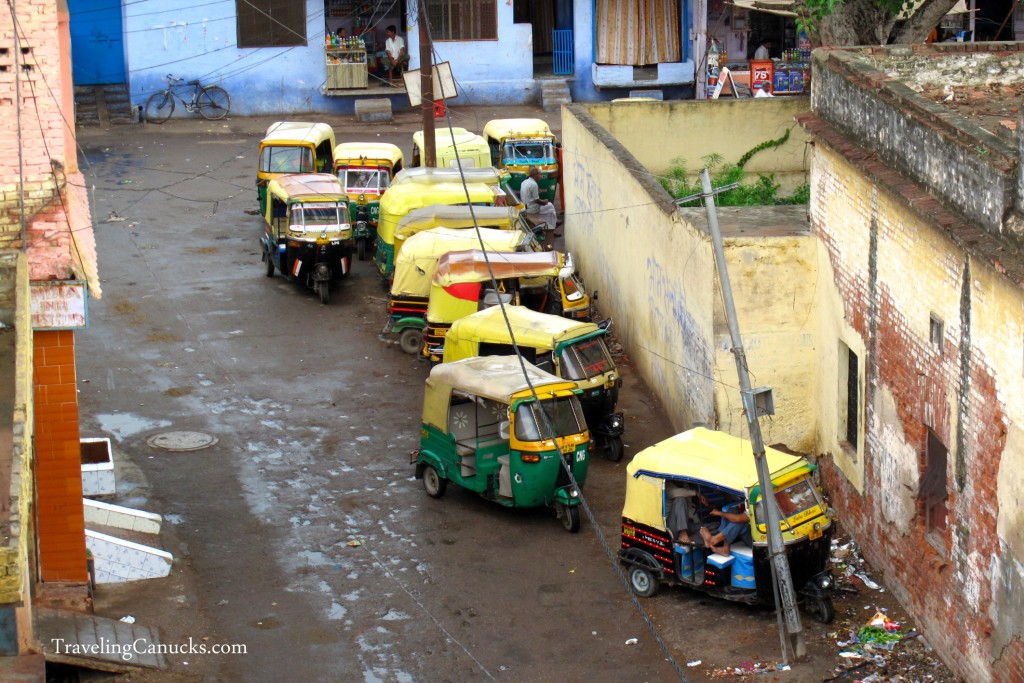
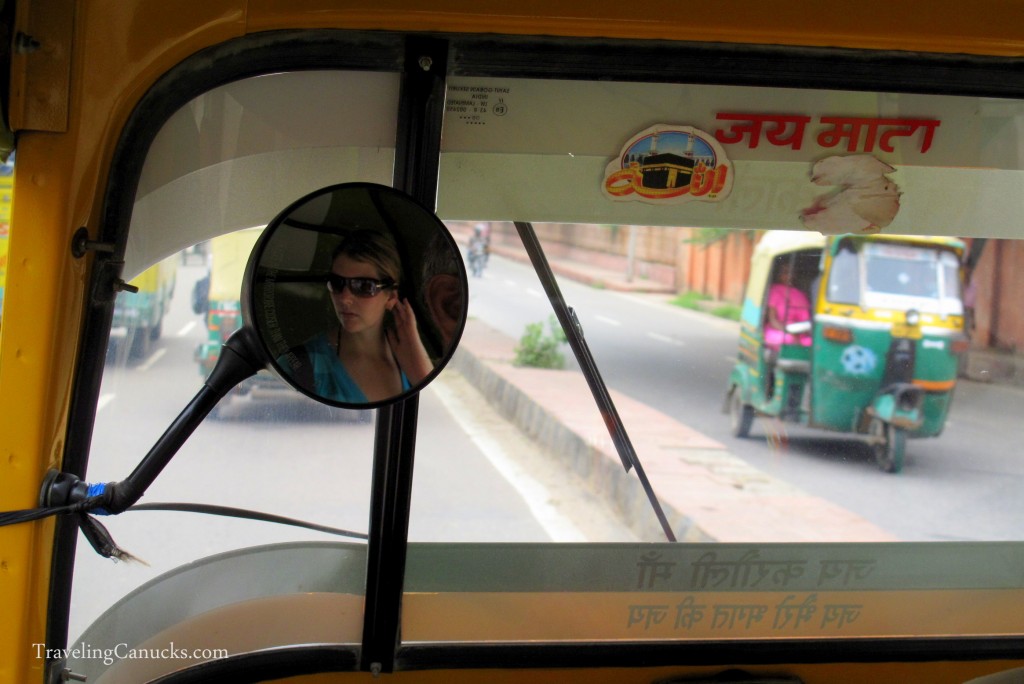


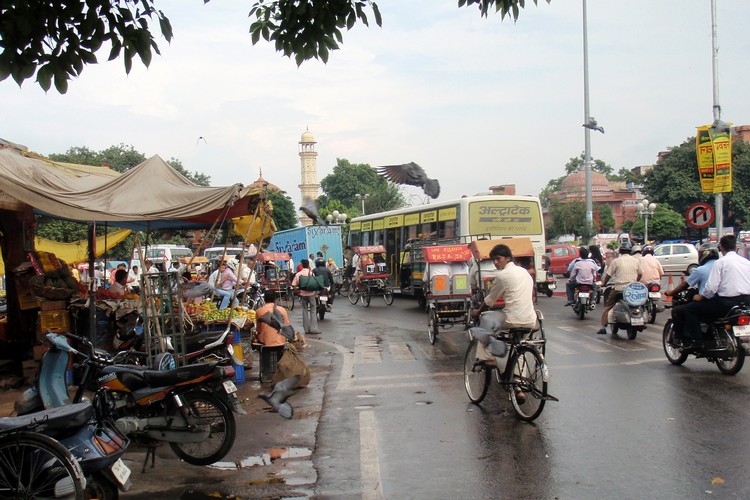


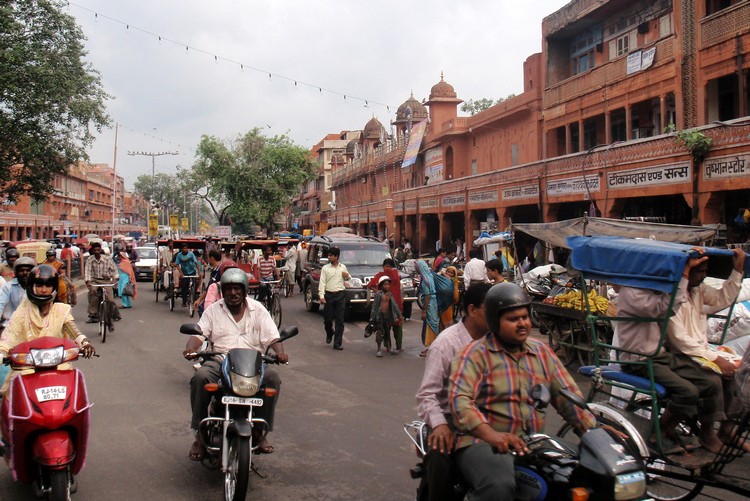

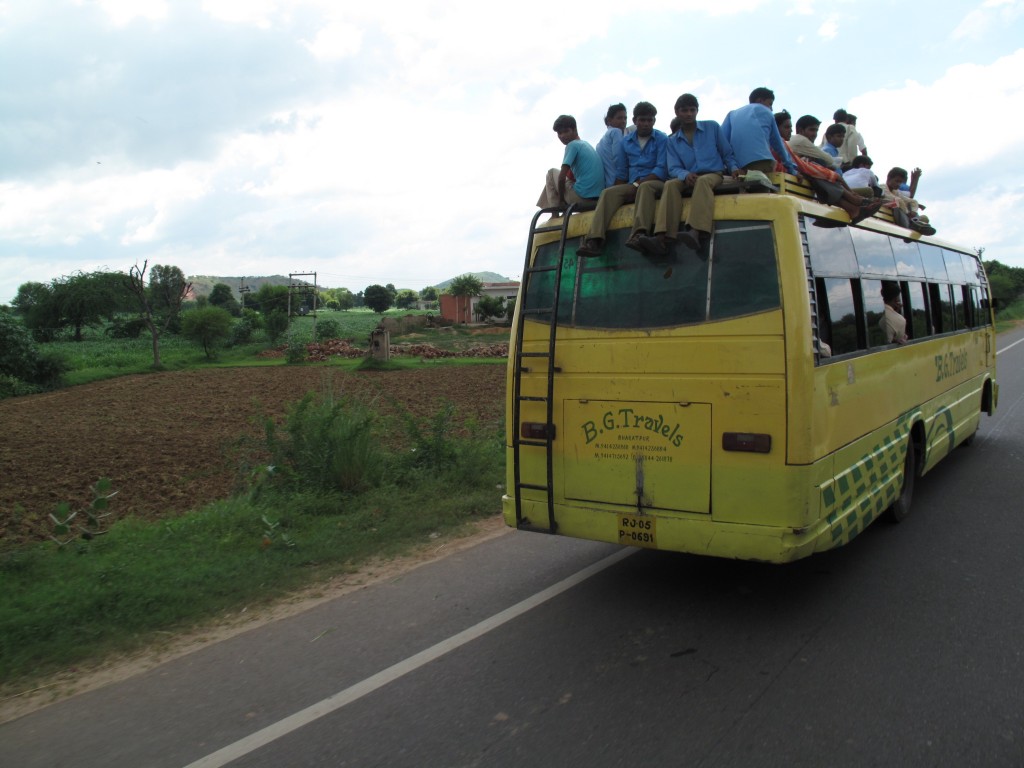

Comments
Post a Comment